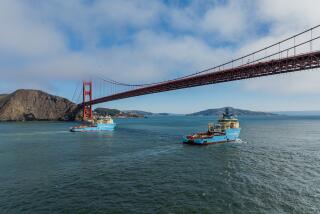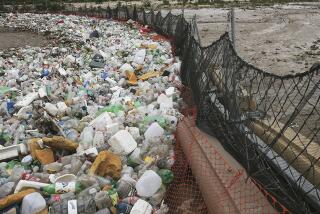Boston Harbor Cleanup
- Share via
* Melissa Healy’s article “Boston Harbor Cleanup Runs Afoul of Nature” (Dec. 14) misses several key points in the harbor cleanup story. Today, Boston’s outdated and undersized treatment plants pour 400 million gallons of inadequately treated sewage into the shallow waters of Boston Harbor. This obvious violation of the Federal Clean Water Act must end, and with the cleanup project under way, it will.
The new outfall tunnel is part of a multibillion-dollar project to improve environmental conditions in Boston Harbor and Massachusetts Bay. A secondary treatment plant under construction will be operational in 1996 and discharges from combined sewer overflows will be controlled.
Two major project milestones have already been met: In 1991 sewage sludge discharges stopped, and 1989 saw an end to the dumping of scum. The amount of pollutants discharged into both Boston Harbor and Massachusetts Bay will be significantly reduced.
Because the effluent discharged from the treatment plant will be far cleaner than the current discharge into Boston Harbor, it’s no surprise that endangered whales will be protected. Even so, the EPA relied on expertise from numerous marine scientists, and hundreds of studies by leading experts, before reaching that conclusion. The independent scientists also concluded that the outfall will not lead to significant changes in nutrient concentrations, the food web or the incidence of red tide in Massachusetts Bay.
Together, through research and technology, endangered species will be protected, and water quality standards will be met. The ongoing work in Boston Harbor is one of the nation’s most important environmental success stories. The science and technologies applied to this resource will serve as a model worldwide.
PAUL G. KEOUGH
Acting Regional Administrator
U.S. Environmental Protection Agency
New England Regional Office
Boston
More to Read
Sign up for Essential California
The most important California stories and recommendations in your inbox every morning.
You may occasionally receive promotional content from the Los Angeles Times.













